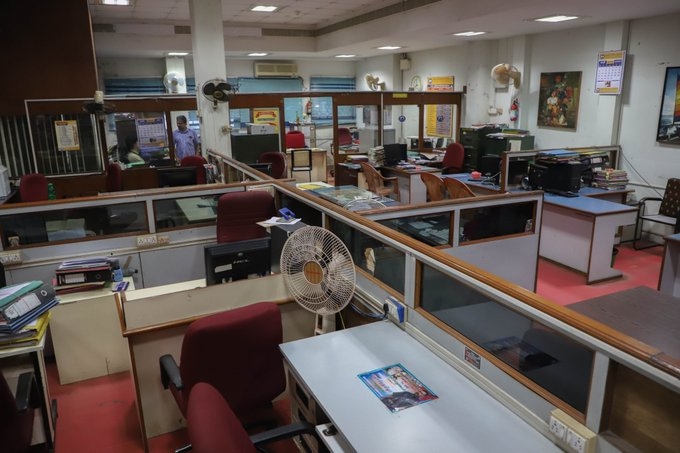Kotak Securities, in a report, said the private banks have increased their market share in current account and in the corporate segment while public banks have been losing share steadily in the household and government sectors…reports Venkatachari Jagannathan
Arbitrage between the lending and deposit rates, higher credit demand, and lower loan provisions resulted in public sector banks (PSB) posting handsome profits during Q2FY23 and H1FY23, say experts.
However, the happy times for the government banks may not continue for much long as competition will soon emerge for deposits, and loans, which, in turn, would increase the cost of funds and reduce the margins, the experts added.
Further maintaining good employee relations by the PSB management will also be a key factor.
“The PSB’s reported significant levels of profitability were aided by robust credit demand, arbitrage between rising lending rates and lagging deposit rates, lower credit costs due to reduced loan provisions, and reducing NPA (non-performing asset) levels,” Saurabh Bhalerao, Associate Director – BFSI Research, CARE Ratings, told.
He also said the impact of rising yields was not as severe as witnessed in Q1FY23.
“Further, this performance has come against a backdrop of higher bad loans, capital infusions by the government, and loss of market share in business (deposits as well as credit),” Bhalerao added.
The gross NPA ratio is expected to decline below five per cent in FY23 and reach pre-Asset Quality Review (AQR) levels of approximately 4.3 per cent in FY24 due to economic expansion, higher recoveries, and proposed transfer of NPAs to various asset reconstruction companies (ARCs), CARE Ratings said.
On November 7, Finance Minister Nirmala Sitharaman said 12 PSBs registered handsome net profits during Q2FY23 and also H1FY23.
“The continuous efforts of our govt for reducing the NPAs & further strengthening the health of PSBs are now showing tangible results. All 12 PSBs declared net profit of Rs 25,685 cr in Q2FY23 & total Rs 40,991 cr in H1FY23, up by 50% & 31.6%, respectively (y-o-y),” she said in a tweet.
Sitharaman also listed out the Q2FY23 profits of State Bank of India (SBI) at Rs 13,265 crore (a growth of 74 per cent), Canara Bank at Rs 2,525 crore (89 per cent), UCO Bank Rs 504 crore (145 per cent) and Bank of Baroda at Rs 3,312.42 crore (58.70 per cent).
“We believe PSBs have reported strong profit in 2Q mainly due to meaningful improvement in credit growth, margins on the back of asset repricing and lower loan loss provisions as banks are well provisioned on the old NPAs, whereas new NPA formation has been lower due to better recovery trends,” Anand Dama, Senior Research Analyst, Emkay Global Financial Services, told.
In order to contain inflation, the Reserve Bank of India (RBI) has hiked the repo rate by 190 basis points in the recent quarters.
While the banks passed on their increased cost to the borrowers, the same benefit was not offered to the depositors and thereby, increased their net interest margin (NIM).
“Further there are expectations of a rate hike in the next monetary policy meet, which will still allow banks to pass on the incremental cost to advances linked to the benchmark, and deposit rates will continue to rise with a lag, protecting the NIM for FY23,” Bhalerao of CARE Ratings said.
That apart, bulk of the government bank’s deposits comprise current and savings accounts whose cost are very low.
According to the RBI, the share of CASA deposits in total deposits has been increasing over the last three years (42 per cent, 43.8 per cent, and 44.5 per cent in June of 2020, 2021 and 2022, respectively.
Emkay Global’s Dama is of the view that the government banks will continue to enjoy the happy times.
“We believe PSBs will continue to benefit from better credit growth, margin uptick and lower loan loss provisions, but need to monitor the G-sec yield movement as it could hurt PSBs a bit on the treasury front and also impending bipartite wage negotiation,” he said.
“Competition among banks to attract deposits is expected to increase given the continued retail credit offtake, coupled with corporate demand picking up in select infrastructure segments and corporates shifting to banks as capital market borrowing rates have increased,” Bhalerao said.
Additionally, incremental provisions may remain low as the slippages from restructured assets are not anticipated to be significant, and that the corporate NPA cycle looks to have bottomed but slippages from the retail and MSME book remains a key monitorable, he said.
“Consequently, some impact on margins may be seen in the first half of FY24,” Bhalerao said.
According to experts, with increased loan offtake by the retail sector coupled with the corporate sector, banks will have to increase their interest rates on term deposits at some point of time.
This may result in shifting of deposits from CASA to term deposits and increased costs. It should also be noted that there has been a tendency amongst bank depositors to have their money in savings accounts.
The other issue the banks have to contend with is the short term – 1-3years – nature of their term deposits.
Competition on the lending side may result in reduction in lending rates, which, in turn, will reduce their NIM cushion.
Kotak Securities, in a report, said the private banks have increased their market share in current account and in the corporate segment while public banks have been losing share steadily in the household and government sectors.
In a research report, Dr. Soumya Kanti Ghosh, Group Chief Economic Adviser, SBI said even as the commercial banks are increasing their interest rates on select deposits, the risk premia over their core funding cost are not factored in the credit risk.
Fresh capital infusion, and cleaning up of the PSBs’ balance sheets is a recurring nature and the risk of NPAs climbing up is also there.
The lending to the corporate sector is picking up and if the economy goes down, then the NPAs will rise and also lending may get curtailed, a banking sector expert, who did not want to be identified, told.
The expert also said the application of Indian Accounting Standard may increase provisioning by PSBs.
These apart, the continued success of PSBs against the competition from private and small finance banks depends on the handling of the human resource by the management.
According to All India Bank Employees’ Association (AIBEA) General Secretary C.H.Venkatachalam, in the recent period, the management attacks/victimisation are not only increasing but there is a common thread in all these attacks.
Venkatachalam said government banks like Bank of Maharashtra are denying trade union rights.
“At the Central Bank of India, it is a jungle raj with the management resorting to indiscriminate transfers. More than 3,300 clerical staff have been transferred from one station to another violating the bipartite settlement and bank level settlement,” he added.













